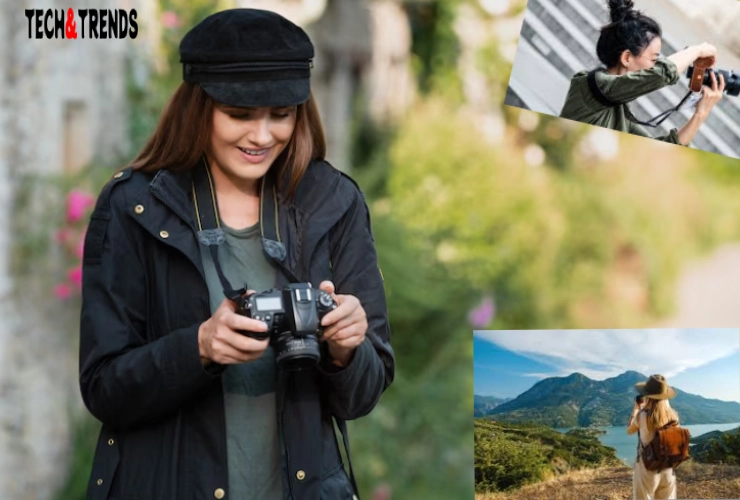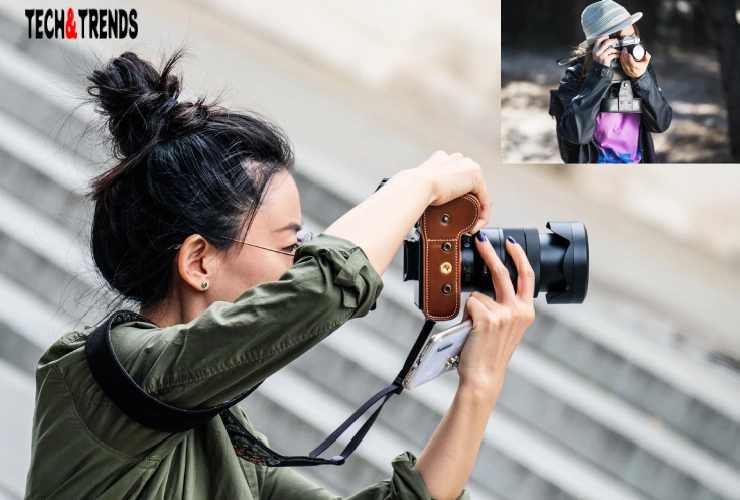Travel photography is more than just taking pictures while you are on vacation. It is about telling stories, capturing emotions, and sharing the world as you see it. Whether you are an amateur or a seasoned traveler, these powerful travel photography tips will help you improve your skills and make your photos stand out in 2025. From planning your trip to using the right gear and mastering composition, this guide covers all you need to know to capture the world like a pro.
Powerful Travel Photography Tips: Focus on Simplicity
Simplicity is key to creating memorable travel photos. Focus on one main subject that tells a clear story or evokes emotion, and remove distractions from your frame. Ask yourself, “What is this photo about?” If the answer is simple, your image will be more powerful and engaging, drawing viewers into your travel experiences
Plan Ahead for the Best Shots
Planning is the first step to great travel photography. Research your destination before you go. Look up the best times to visit for good weather and lighting. Check if there are any restrictions at popular photo spots. Use Google Maps street view to find unique angles and viewpoints before you arrive. Booking accommodation near key locations can save you time and help you catch spontaneous moments. Planning helps you make the most of your trip and ensures you come home with stunning images.
Stay Flexible and Adapt to Change
Even with the best planning, things do not always go as expected. Weather can change, attractions may be closed, or you might find new, unexpected photo opportunities. Staying flexible allows you to adapt and capture unique moments. Sometimes, the best travel photos come from unplanned situations. Give yourself extra time in your schedule so you can wait for the perfect light or explore off-the-beaten-path locations.
Master Your Camera Settings
Understanding your camera is essential for travel photography. Learn how to adjust settings like ISO, shutter speed, and aperture. Lower ISO settings reduce grain and noise, especially in low light. Use a tripod to keep your camera steady and allow for slower shutter speeds at night or in dim environments.
Experiment with different modes and settings to see what works best for each situation. Knowing your camera well will help you react quickly and capture great shots.
Use Light to Your Advantage
Light is one of the most important elements in photography. The golden hours—early morning and late afternoon—offer soft, warm light that makes your photos look magical. Harsh midday sun can create strong shadows, but you can use this creatively, especially for architecture and street scenes. Pay attention to the direction and quality of light. Experiment with shadows and contrast to add drama and depth to your images.
Composition: The Key to Stunning Photos
Great composition turns a good photo into a great one. Use the rule of thirds by placing your subject off-center for a more balanced image. Look for leading lines, like roads or pathways, to guide the viewer’s eye through the photo. Try different angles and perspectives—get low to the ground or shoot from above. Do not be afraid to include reflections, especially on rainy days. Good composition helps your photos stand out and tell a story.
Focus on Details and Tell a Story
Wide shots are great for landscapes, but do not forget about the small details. Zoom in on food, local crafts, or unique textures. These close-up shots add variety to your collection and help tell the story of your trip. Macro photography is perfect for capturing minute details that are often overlooked. Mixing wide and close-up shots gives your travel album depth and interest.
Pack Smart: Travel Light with the Right Gear
Carrying too much gear can slow you down. Bring only what you need—a versatile lens like a 24-70mm covers a wide range of situations. Pack extra batteries and memory cards so you never miss a shot. A lightweight tripod or compact gimbal is useful for stable shots without adding much weight. Smart packing makes travel easier and helps you stay ready for any photo opportunity.
Use Technology to Enhance Your Workflow
Modern technology makes travel photography easier than ever. Use apps to transfer photos from your camera to your phone or the cloud. This keeps your images safe and allows you to share them quickly. Remote control apps let you take group shots or keep your camera still for night scenes. Editing apps like Lightroom help you enhance your photos on the go. Technology saves time and helps you stay organized.
Experiment with Lenses and Perspectives
Different lenses offer unique ways to capture your surroundings. A wide-angle lens is great for landscapes and architecture, making scenes look bigger and more impressive. A macro lens lets you focus on small details, like food or textures. Try changing your perspective—shoot from ground level or find a high vantage point. Experimenting with lenses and angles keeps your photography fresh and interesting.
Capture Unique Moments and Spontaneous Events
Some of the best travel photos come from unexpected moments. Be ready to capture spontaneous events, like street performances, wildlife, or interesting people. Keep your camera handy and stay alert for photo opportunities. Patience is key—sometimes you need to wait for the right moment to get the perfect shot. Unique moments add authenticity and life to your travel photography.
Edit Your Photos for Maximum Impact
Editing is an important part of travel photography. Simple adjustments like cropping, adjusting brightness, and increasing contrast can make a big difference. Use editing software to enhance colors and correct exposure. Do not over-edit—keep your images natural and true to what you saw. Editing helps your photos look their best and stand out from the crowd.
Travel During the Shoulder Months
Traveling in the off-season, or shoulder months, has many benefits for photographers. There are fewer tourists, making it easier to take photos without crowds. The weather is often still good, and prices are lower. You can enjoy popular spots in peace and capture more authentic images. Shoulder months are a great time to travel for both comfort and creativity.
Wake Up Early for the Best Light
Sunrise is a magical time for photography. The light is soft, the colors are rich, and the streets are quiet. Most people prefer to stay in bed, so you can enjoy empty beaches and landmarks. Waking up just 10 minutes before sunrise can give you a huge advantage. Early mornings are perfect for capturing serene and beautiful images.
Use a Tripod for Sharp and Creative Shots
A tripod is a valuable tool for travel photographers. It allows you to take sharp photos in low light and at night. With a tripod, you can use slower shutter speeds for creative effects, like light trails or smooth waterfalls. It is also great for group photos or self-portraits. Compact, lightweight tripods are easy to carry and make a big difference in your photography.
Guide the Viewer’s Eye with Contrast and Direction
The human eye is drawn to contrast and movement. Use dark-to-light transitions to guide the viewer’s gaze through your photo. Adjust exposure and contrast in editing to highlight important areas. This technique makes your images more engaging and helps tell your story visually. Thoughtful use of contrast and direction adds depth and emotion to your travel photos.
Learn from Others and Keep Improving
Travel photography is a skill that improves with practice. Look at the work of other photographers for inspiration. Join online communities and share your photos for feedback. Keep learning new techniques and experimenting with different styles. Continuous learning helps you grow as a photographer and keeps your work fresh and exciting.
Embrace the Local Culture and Environment
Travel photography is not just about places—it is about people and culture. Be respectful and open when photographing locals. Ask for permission when needed, and try to capture authentic moments. Learn about customs and traditions before you go. Showing respect helps you connect with people and get more meaningful photos.
Stay Safe and Respectful While Traveling
Safety should always come first. Be aware of your surroundings and keep your gear secure. Respect local rules and customs, especially at religious or sensitive sites. Avoid taking photos where it is not allowed. Being respectful and cautious ensures a positive experience for you and those around you.
Share Your Story and Inspire Others
Travel photography is a way to share your journey with the world. Post your photos on social media, start a blog, or create a photo book. Share the stories behind your images and inspire others to explore. Your photos can help people see new places and experience different cultures through your eyes.
| Tip | Why It Matters |
|---|---|
| Plan ahead | Ensures best light and access to key locations |
| Stay flexible | Captures spontaneous, unique moments |
| Master camera settings | Improves photo quality and adaptability |
| Use light to your advantage | Enhances mood and visual impact |
| Focus on composition | Makes photos more interesting and balanced |
| Capture details | Adds variety and storytelling |
| Pack smart | Keeps you mobile and ready |
| Use technology | Speeds up workflow and sharing |
| Experiment with lenses | Offers creative perspectives |
| Edit your photos | Maximizes visual impact |
| Travel in shoulder months | Avoids crowds and gets authentic shots |
| Wake up early | Captures best light and peaceful scenes |
| Use a tripod | Ensures sharp, creative shots |
| Guide viewer’s eye | Creates engaging, emotional images |
| Learn from others | Improves skills and inspiration |
| Embrace local culture | Captures authentic, meaningful moments |
| Stay safe and respectful | Ensures positive experience for everyone |
| Share your story | Inspires others and documents your journey |
Conclusion
Travel photography is a powerful way to capture the beauty and diversity of the world. By following these powerful travel photography tips, you can improve your skills, tell better stories, and create images that stand out. Remember to plan ahead, stay flexible, use the right gear, and keep learning. Most importantly, enjoy the process and let your photos reflect your unique perspective. With practice and passion, you can capture the world like a pro.


Comments are closed.